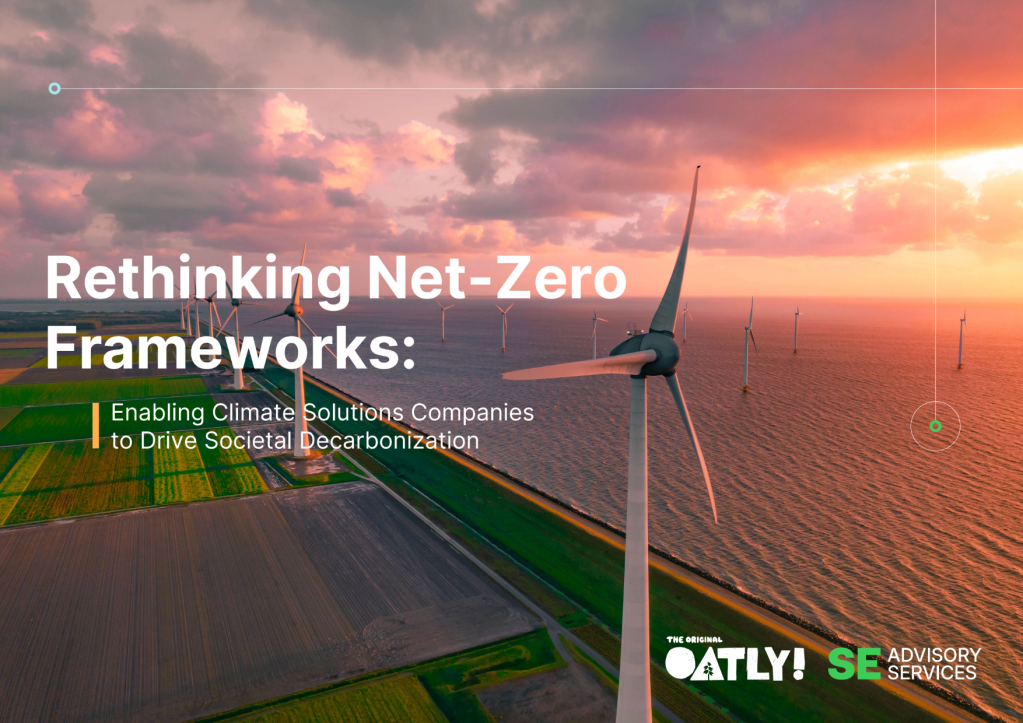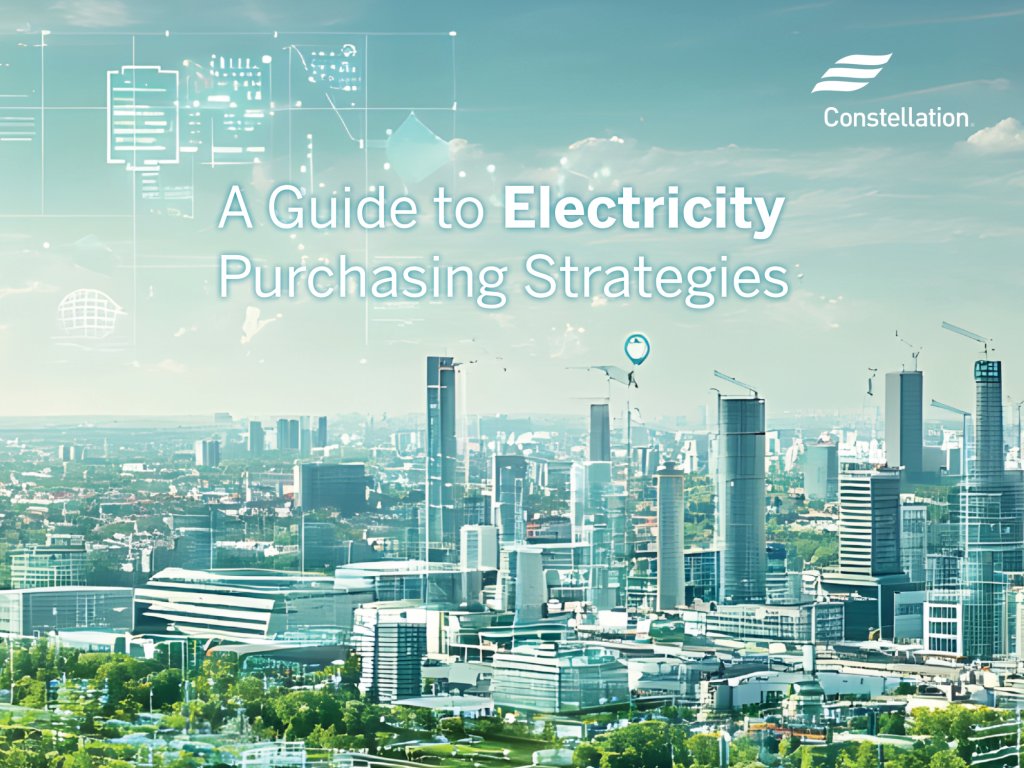How solar minigrids could brighten economic prospects for unserved millions in Africa
The demand from grain mills, water pumping, health clinics, barbershops and countless other businesses is there. Read More

For a glimpse of a huge opportunity for both business and improving lives in the developing world, spend some time with Finian Oyem in the rural Nigerian village of Onyen-Okpon.
Oyem grows cocoa, cassava and yams. But the town is 4 miles away from the nearest electricity grid connection, so his power comes from a petrol-fueled engine and generator, or genset.
That electricity is expensive: up to $0.52 per kilowatt-hour (kWh). That’s more than five times the average retail price in the United States. Moreover, the genset power is noisy, polluting and unreliable, and it comes with additional maintenance costs. It’s no surprise, then, that many of the 500 households in Onyen-Okpon have no electricity at all: They shell out an average of $6 per month for kerosene and for charging cell phones.
The high cost of power in Onyen-Okpon is a serious drag on the village’s economic potential. It’s also a major problem for the entire nation, afflicting tens of thousands of other communities in Nigeria, from small villages such as Onyen-Okpon to massive centers of commerce such as the huge Sabon Gari Market in Kano, powered until recently by hundreds of gensets. The lack of a reliable national grid has forced Nigerians to turn to a staggering total of 10 gigawatts of expensive, often unreliable, genset power — and still more than half of the nation’s 186 million people (and 1.2 billion around the world overall) have no electricity at all. This lack of affordable, reliable electricity holds back economic development all across sub-Saharan Africa and Southeast Asia.
But it also means a major opportunity for governments and development agencies to boost economic growth, and a multibillion-dollar market for investors and companies brave enough to plunge in to find a solution. The demand in these countries — from grain mills, water pumping, health clinics, barbershops and countless other businesses — is there. So is the ability to pay, as shown by the high prices paid by Oyem and borne by businesses everywhere from Kenya to Sri Lanka. Nigerians, for example, spend $14 billion annually for unreliable, inefficient, polluting power that can cost up to $0.70/kWh.
The market for clean, reliable electricity in Nigeria alone would be at least $9.4 billion per year, analysis from Rocky Mountain Institute shows. The number also would rise in a reinforcing cycle, because cheaper power would put more money in the pockets of people such as Oyem and unleash new waves of investment and innovation that boost the demand for power.
History already shows us how rural electrification in Europe and the United States touched off that type of positive feedback in the 20th century, boosting local economies by many multiples over the investment in the grid itself. Now, making affordable power available across Africa and Southeast Asia similarly would accelerate economic growth in the 21st century, even as it creates a strong utility business with large, predictable and stable revenues.
We already can see tiny examples of the potential transformation in the carpentry shop in the Indian village of Bheldi, where newly available electricity enabled owner Siyaram Pandey to invest in new machines and hire two more workers, or in Kenya’s Kitonyoni Health Centre, where nurse Mercy Twili delivers babies at night in the glow of electric lights instead of holding a cell phone in her teeth.
The technology that makes all this possible is the solar-based minigrid, an islanded distribution network of generation and loads operating separately from the main grid. In Onyen-Okpon, for example, RMI calculates that a capital investment of $1.1 million could build such a minigrid, consisting of a 460-kW solar PV array, 720 kWh of battery storage, and a 220-kW diesel backup generator, that delivers power at $0.40/kWh. That would save the community $0.12/kWh — or more than $100,000 per year — and provide reliable power throughout the day and evening.
Oyem said that means the town could set up new processing facilities, raising everyone’s standard of living. Townspeople are so confident about the benefits from a minigrid that they will dig into their own pockets to help pay for it, he said. Simply serving existing loads, the project would earn a healthy 15 percent return on investment with predictable revenue of $31,000 per month that would grow over time. The returns and benefits to the community get even better when the cost of the power can be brought down to $0.20/kWh, which RMI’s work shows is achievable by 2020.
Such solar minigrids could be profitably built at more than 10,000 sites in Nigeria by 2023, RMI estimates. That would add capacity of up to 3,000 megawatts, bringing reliable and affordable electricity to 14 percent of the nation’s population. It also would offer more than $3 billion a year in revenue to the companies and investors that build the systems, an excellent return on the estimated investment of about $20 billion, RMI calculates.
Skeptics will point out that solar minigrids are not a new idea, and they have a spotty track record. Indeed, foundations and development partners already have invested $300 million to $400 million in hundreds of pilot projects. Moreover, evaluations and site visits by RMI program managers and analysts to dozens of projects in Nigeria, Uganda, Rwanda, Kenya, Sierra Leone and India show that few have demonstrated a viable and scalable business, with sufficient return on capital to draw in the really large investments needed. Many have not lived up to expectations, because of such problems as initial high capital costs or insufficient electricity demand. Surprisingly, a current major barrier is the perception that not enough demand for power exists to justify major investments.
Now, after several years of work, including extensive consultations with key players and a 3.5-day charrette (PDF) in Nigeria with more than 60 industry leaders in early March, RMI has created a detailed and unique pathway for proving that the demand exists and for unlocking this business opportunity.
This analysis provides a path to rapidly accelerate market growth for minigrids, including cutting the cost of power by two-thirds, from $0.60-1.00/kWh today to $0.25/kWh by 2020. At that price, minigrid electricity would be far cheaper than power from the small, noisy and polluting petrol and diesel generators that are ubiquitous across Africa and Southeast Asia — and transformative in the economic activity it would unlock.

Finding a profitable and scalable minigrid business model
How can this transformation happen? RMI’s work shows the path forward requires detailed action on six fronts:
1. Dramatically reduce the costs of the minigrid hardware
The cost for critical components such as solar panels, batteries and power electronics will continue to fall, driven by global market innovation. Minigrid costs will fall further as companies scale up purchasing, optimize supply chains and system designs, and standardize minigrid hardware into modular designs that can be transported pre-assembled in standard shipping containers, instead of assembling custom systems on site. These steps would reduce the cost of minigrid electricity by $0.10/kWh, or about 20 percent, RMI calculated.
2. Ensure that the electricity generated is put to good use
Many existing minigrids suffer from an ironic problem — not enough demand, especially during the middle of the day when low-cost energy from solar panels peaks. It’s crucial to locate minigrids near productive uses of energy — operations such as grain mills, garment factories, hospitals or a business district of shops — to ensure sufficient demand and revenues. That means working with local leaders and entrepreneurs to find the ideal locations, to devise business models tailored to the needs of a village or community, and to find innovative ways to increase demand and use. Investing in an additional electric cassava mill or flexible water pump to use up more peak daytime power production, for instance, would cut the overall cost of energy by 12 percent or more, RMI calculated, while offering programs to switch to efficient LEDs would reduce or eliminate the need for expensive genset power after the sun goes down.
3. Harness the wisdom of customers and local partners
Locally produced power from solar minigrids offers an exciting opportunity for increased community engagement compared with a traditional grid producing power at a large centralized power plant far away. Grassroots activities can help with finding and surveying the best sites, signing up customers and finding productive loads that can generate new income. Local staff can be trained for many jobs and co-ownership of hardware could improve cash flow for companies while further aligning incentives with communities for shared goals.
Minigrid developers exhibit the need for this community-centric focus as they attempt to understand who in a community actually will sign up to buy power, who will invest in new machinery or appliances that would grow demand, and how new customers can be added once electricity is available. These efforts can be made more efficient and effective by partnering with local agricultural coops or telecom companies, which already have customer relationships; or by building on the efforts of government organizations such as Nigeria’s Rural Electrification Agency (REA), which so far has identified 114 promising sites for minigrid development, each with an average estimated peak demand of 100–200 kW and enough existing businesses to support the minigrid investment. It’s also important to set up easy payment mechanisms, such as mobile money, and to offer financing to help businesses and households buy new equipment or appliances that will increase the demand for power.
4. Cut costs of building and operating minigrids and prove the business case
Building scores of minigrids in closely spaced clusters is far quicker and more efficient than constructing them one at a time in far-flung locations. Such clusters also are less expensive to operate and maintain. Unexpected maintenance issues can be reduced with standard, pre-assembled hardware along with integrated remote monitoring systems that will help to manage and predict maintenance more precisely. RMI calculates that this approach will slash overhead and maintenance costs by up to 60 percent, reducing the final cost of power by 10 percent, or $0.06/kWh.
5. Reduce regulatory barriers, costs and risks
Minigrid developers already can benefit from government efforts to streamline policies and regulations. For example, Nigeria and Tanzania no longer require tariff approval for minigrids under 100 kW in size (in peak power), and both countries have sped up their permitting processes. Companies and investors can build on these successes in working with other countries to reduce costly or daunting policies, such as import duties. Getting costs to near $0.25/kWh will increase momentum by making the minigrid solution a political imperative.
6. Enable low-cost financing
Major gains are possible by lowering financing costs, which can be higher than 15 percent for commercial debt in sub-Saharan Africa. The key is to increase lender comfort with minigrids by using grants to fund a few carefully designed and sited minigrid projects, then rigorously measuring their performance to prove the business model. That would open the door to concessional financing to support construction and operation of scores more minigrids. The success of these facilities, documented with hard data, would attract venture capital and private equity investors and turn on the spigot of low-cost commercial financing. Low-cost capital for new equipment also would enable electricity customers to buy the new appliances and other devices that would accelerate the demand for energy, reinforcing the positive cycle of investment and consumption.

Developing an investment roadmap to deliver these results quickly
RMI is working with the finance community to create and implement an investment roadmap. Refined and validated through the recent charrette and intensive consultations with experts, this roadmap charts the transition from today’s grant-funded projects to impact and strategic investors with access to concessional debt, then to venture capital and blended finance, and finally to the much larger pools of capital from private equity and commercial debt that are needed to seize the multibillion-dollar market opportunity.
What’s important is that this transition can happen quickly — and, in fact, is already beginning. One major conclusion from the March charrette in Nigeria is that the roadmap itself can offer confidence to investors and thus will accelerate progress. Investors and developers can understand how specific projects will deliver the reliable data and proof needed to move rapidly to de-risk minigrids as an investment and unlock each subsequent source of capital.
The first step of this roadmap is critical — moving from grant funding to the first round of impact/angel investors along with concessional debt. Encouragingly, just five to 10 successful projects supported by several million dollars of grant funding may be sufficient to achieve this goal. The projects would focus on delivering specific proof points about customer demand and ability/willingness to pay that are needed to sufficiently de-risk the business model before these investors are willing to enter. Following this roadmap, it’s possible to engage and line up subsequent funding rounds through the program, and RMI’s work suggests that strategic investors, venture capital, private equity and commercial debt could enter within three to five years.
The stakes are enormous — not only is there a huge business and economic development opportunity, there also is a chance to make a tremendous difference in the lives of hundreds of millions of people.
Affordable, reliable electricity will prevent countless cases of disease by refrigerating lifesaving vaccines and drugs. It will reduce hunger and boost profits for local farmers and fisherman by reducing the spoilage of meat, milk and fish, and by increasing agricultural productivity. It will replace the backbreaking labor of carrying water and gathering wood, enable children to study late into the evening, cut pollution and poverty, and raise GDPs.

Subscribe to Trellis Briefing
Featured Reports

The Premier Event for Sustainable Business Leaders















